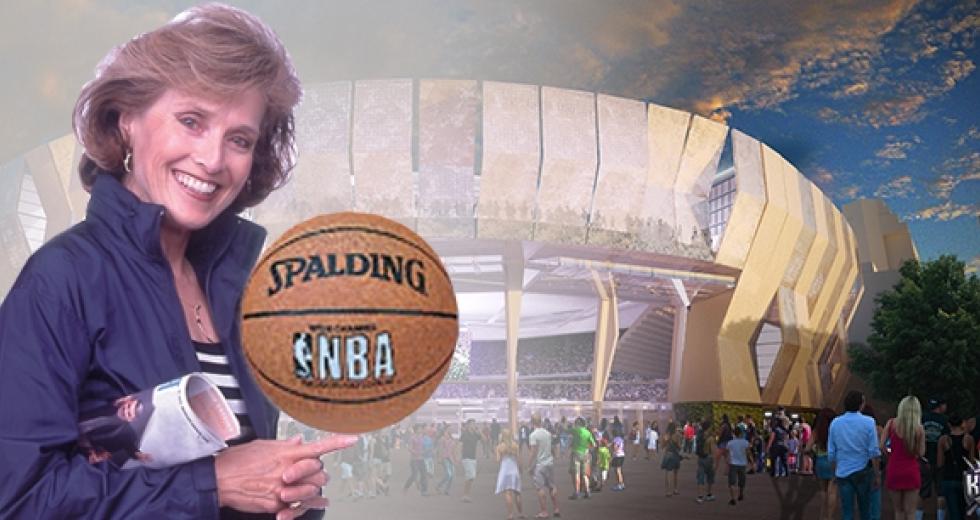From May 2002:
How much is $300 million? It’s enough to buy 85,714 Comstock’s Business Magazines (at $3.50 apiece – it’s even less if you subscribe for a year); 1,132.105 new homes (the average new home price in the Sacramento Region last year was $309,159); 1,428 million passenger miles on the Capitol Corridor (at a rate of 21 cents per mile); health care for a year for 79,800 people (at an average annual cost of $3,759 per person), or one downtown basketball arena, give or take $20 (according to a recent study by Goal Group Consulting, LLC, together with the experts at Sports Economics and Keyer Marston Associates).
Yes, the city, together with Union Pacific Railroad and Maloof Sports & Entertainment, commissioned a study to see if such a stadium would be feasible and whether it would be the economic kick-start Mayor Heather Fargo envisions for 240 acres of undeveloped property in the Richard Boulevard Redevelopment Project.
The report makes a downtown arena sound ideal. The site is close to transportation. Stadiums in other cities have resulted in the opening of new retail and restaurant spaces – and don’t forget those valuable extra box seats. And, after the King’s performance this year, who could deny that having a winning team is a great boost to the Capital Region ego. But I am not going to comment on the pros and cons of a downtown stadium today – we have plenty of time for that. While the politicians debate their priorities and calculate what percentage each organization should have to pay (the report concluded that the city’s participation may need to go beyond public infrastructure based on an analysis of comparable NBA markets), I just want to put in my vote that whatever happens – it should be a regional effort.
Those who went on the Sacramento Metropolitan Chamber Study Mission to Denver know that when the stadium there was voted in, the vote from “outlying” areas was what actually put it over the edge. Denver proper voted it down. They also had two other things going in their favor. They had to get a simple majority, rather than two-thirds approval which California’s Prop. 13 mandates; their sales tax was not as high as ours; and they didn’t have a push to reapprove and expand Measure A (the transportation sales tax) looming over their deductions.
On the mayor’s recent stadium tour to Columbus, Ohio’s Gund Arena and the Conseco Fieldhouse in Indianapolis, Ind., she and other officials discovered for themselves that to be successful, these projects need to be public-private partnerships. Even the Ohio stadium, which was financed in large part by Nationwide Insurance Company, cost taxpayers about $30 million.
If we are going to do this, we have to be creative. Maybe proponents need to include something in the bond measure that would appeal to the outlying areas and/or people who don’t know a jump shot from a jumping frog. That something could come in the form of funds to refurbish the existing arena into a public attraction like an aquarium or a science center (the report specifically said that the Sacramento marketplace cannot support two arenas).
One idea comes from Evangeline Higginbotham, executive director of the Discovery Museum in Old Sacramento, who says that she has had plans for some kind of an attraction in Natomas on the back burner for some time. If she could expand the planetarium and animal exhibits currently at the small science museum on Auburn Boulevard to be more like San Francisco’s Exploratorium, what a great attraction that would be for our region. If, however, the city sees more value in tearing down the arena to make way for office space, as has been suggested (remember the city still owes $73 million for the existing Arco Arena), Higginbotham also sees great value in locating a space museum downtown next to an arena.
Proponents might consider including something for art lovers, like the possibility that on non-game night the space be used for cultural performances. Perhaps a portion of the bond would cover renovation of a Roseville art center or Woodland theater. Whatever we do, we need to make sure the entire region is involved. And bribery is always a viable option.
Dan Friedlander, a visionary who is trying to reinvent Del Paso Boulevard as an uptown art center, starting with his Limn Company and including a new supper club in the works by Matt (formerly a chef with David Berkley’s The Kitchen) and Yzette Woolston, suggested only allowing people from the cities that vote for the bond to buy tickets. That’s a little harsh, but I guess all is fair in love and sports.



